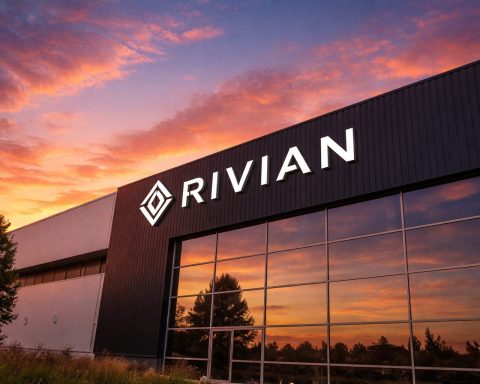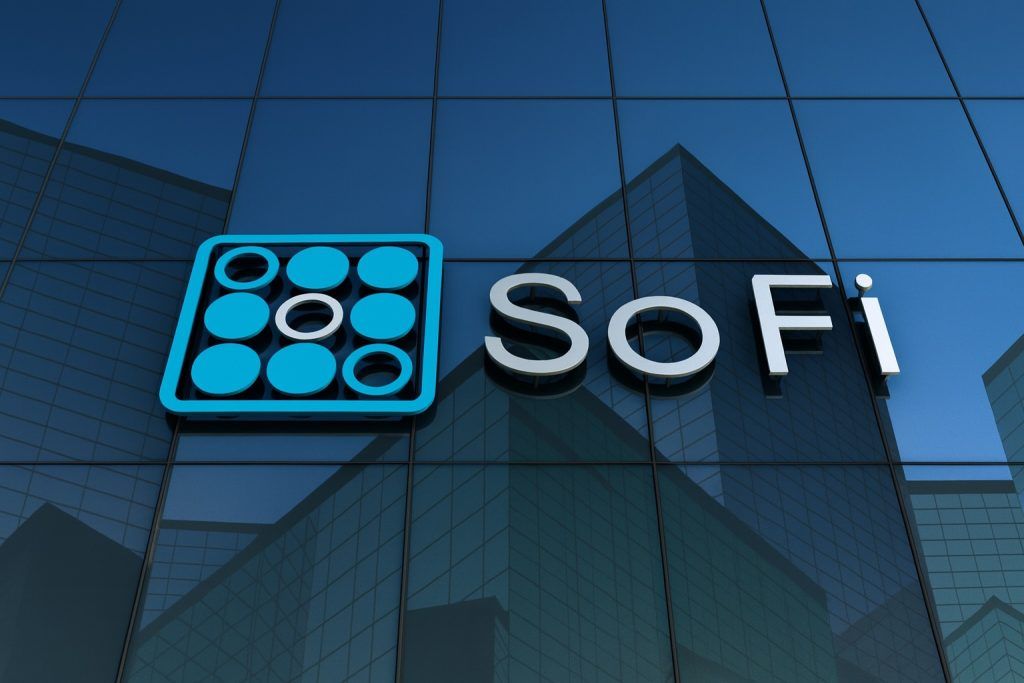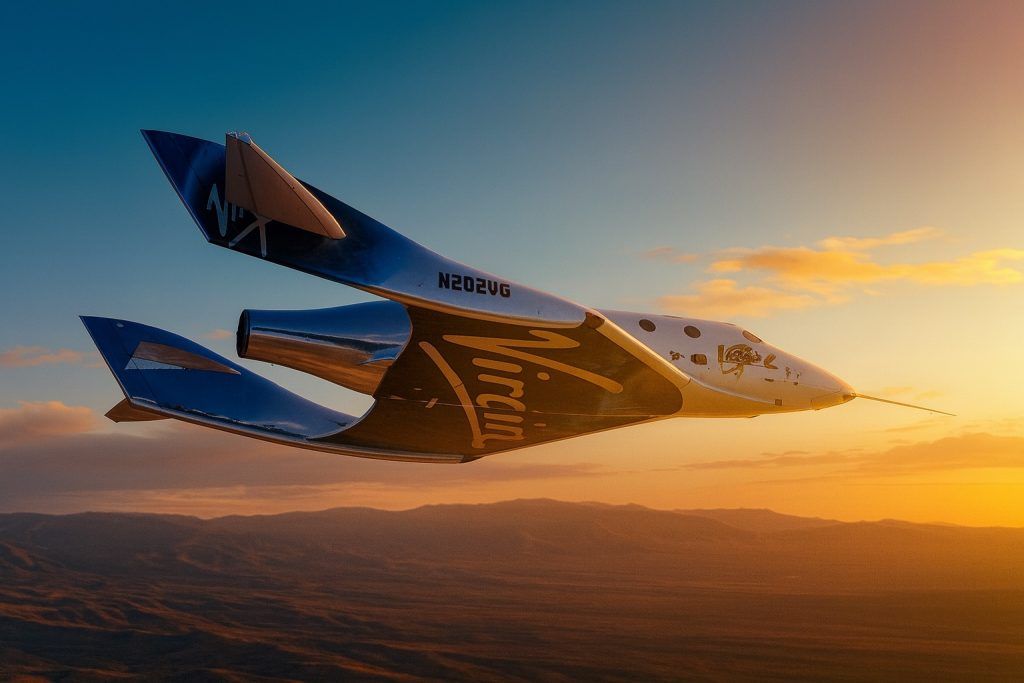- Stock surge after U.S. government investment: LAC’s share price spiked ~23–24 % on October 1 2025 to about US$7.04 following news that the U.S. Department of Energy (DOE) will take 5 % equity stakes in both Lithium Americas and its Thacker Pass joint venture. The DOE unlocked a US$435 million first draw from a US$2.26 billion loan and will receive its stake via penny warrants; the agreement also modifies General Motors’ offtake rights [1]. Analysts viewed the deal as a game‑changer, signalling federal backing for domestic lithium supply.
- Mixed analyst ratings and price targets: The Wedbush upgrade to a US$8 price target propelled shares to a 52‑week high. Consensus targets across brokers hover around US$5–5.2 with a “Hold” or “Buy” rating. Other brokers (TD Cowen, Jefferies, TD Securities) have targets in the US$5–7 range [2] [3].
- Thacker Pass advances: Phase 1 reached final investment decision on 1 April 2025. By mid‑2025, detailed engineering was ~70 % complete and first steel installation scheduled for September. The company capitalized US$574.1 million of construction and project costs [4]. A 2025 settlement with a rancher resolved the last major water‑rights dispute [5]. Production is targeted for late 2027, ultimately delivering 40 000 t LCE/y, enough for 800 000 EVs annually [6].
- Strategic projects: In addition to Thacker Pass (Nevada), Lithium Americas owns a 44.8 % stake in the Cauchari‑Olaroz brine project in Argentina through Lithium Argentina (LAAC). Phase 1 of Cauchari‑Olaroz achieved first production in 2023 and targeted 40 000 t LCE/y. Lithium Americas also holds early‑stage exploration properties in the U.S. and recently spun off its Argentine assets into a separate entity to comply with U.S. sourcing rules.
- Macro environment: Lithium prices fell sharply in 2024–25 due to oversupply, dropping to ~US$8–10 kg for battery‑grade carbonate and hydroxide [7] [8]. Oversupply is expected to narrow in 2025–26 as production cutbacks meet rising EV and energy storage demand [9]. Long‑term demand drivers remain robust, with EV sales projected to surpass 20 million units in 2025 and global LCE demand expected to exceed 2.4 million t by 2030 [10] [11].
- Regulatory and geopolitical factors: The DOE investment underscores U.S. efforts to cut dependence on Chinese supply chains; domestic output currently produces only enough lithium for ~158 000 Tesla Model 3s annually [12]. Thacker Pass could vault the U.S. into the top four producers but would meet just 8 % of projected domestic demand [13]. Litigation around water rights and indigenous opposition has largely been settled [14].
Current Stock Performance as of October 1 2025
Price action and market sentiment
Lithium Americas shares (NYSE: LAC) closed at US$7.04 on October 1 2025, up US$1.33 (+23.3 %) from the previous session, after spiking as high as US$7.53—a new 52‑week high [15]. The surge followed two major catalysts:
- DOE loan draw and equity stake: On 1 October, Reuters reported that the U.S. Department of Energy would take a 5 % stake in both Lithium Americas and the Thacker Pass joint venture as part of a US$2.26 billion loan program [16]. The loan’s first draw of US$435 million is earmarked for construction and working capital; the DOE’s stake is exercisable at a penny per share. The U.S. investment aims to secure domestic supply chain resilience and reduce reliance on China. [17] Shares jumped 23 % after the announcement and remained volatile in after‑hours trading.
- Analyst upgrade: Wedbush analyst Dan Ives raised his target from US$5 to US$8 while maintaining a neutral rating, calling the DOE agreement a “game‑changer” that defers US$182 million of debt service and draws significant government backing [18]. The upgrade triggered momentum buying and short covering, pushing shares toward the US$7.50 level.
Daily average volume spiked sharply to over 40 million shares, compared with a three‑month average near 9 million. Social‑media chatter recorded by QuiverQuant indicated high retail interest, with some posts anticipating “multi‑bagger” returns [19]. Institutional investors were net buyers; MarketBeat reported new positions from Brown Advisory, Cormark and other funds [20].
Relative to historical performance
Prior to the surge, LAC had languished near all‑time lows. Over the previous 12 months the stock traded between US$2.09 and US$7.53, reflecting investor pessimism about oversupplied lithium markets. Its 50‑day moving average was US$3.24 and 200‑day moving average US$2.95 [21]. The company’s market capitalization at US$7.04 was ~US$1.7 billion, still well below the 2022 highs. With a negative P/E ratio and high cash burn, the equity remains speculative, but the DOE support has improved risk perceptions.
Major Developments in September–October 2025
DOE loan and 5 % equity stakes
In late September, Lithium Americas finalized agreements with the U.S. DOE to draw the first US$435 million from its previously announced US$2.26 billion conditional loan, using the funds for construction and working capital at Thacker Pass [22]. The DOE will receive 5 % equity stakes in both Lithium Americas and the joint venture with General Motors (GM). GM retains its 38 % stake and rights to purchase all Phase‑1 production and a portion of Phase‑2 production for 20 years [23]. Canada’s government will review the DOE’s stake under the Investment Canada Act.
This deal is strategically important because it anchors federal support for a project that has faced financing challenges. It also reduces immediate debt repayments by deferring ~US$182 million [24]. Analysts note that government ownership in a publicly traded commodity producer is unusual, signalling a shift in policy toward securing domestic critical mineral supply.
Other corporate news and operational updates
- Q2 2025 results and project progress: On August 14 2025, Lithium Americas announced that the final investment decision for Thacker Pass Phase 1 was taken on April 1 2025, with detailed engineering about 70 % complete and first steel installation set for September [25]. The company had capitalized US$574.1 million of construction and project costs as of June 30 and expected the workforce to rise to ~1 000 by year‑end [26]. Cash and restricted cash totaled US$509.1 million [27]. The company closed a US$220 million investment from Orion Resource Partners and established an at‑the‑market equity program raising US$63.6 million [28].
- Water rights settlement: On August 15 2025, Lithium Americas settled a water‑rights dispute with Nevada rancher Edward Bartell by purchasing his water rights, effectively ending court appeals and enabling pumping to proceed. All legal challenges against Thacker Pass were resolved or dismissed [29]. This removed a significant regulatory overhang; previously the state had issued a cease‑and‑desist order for pumping but the settlement grants the company access to required water (2 600 acre‑feet per year during production) [30].
- Spin‑off into Lithium Americas (Argentina): To comply with U.S. domestic sourcing requirements under the Inflation Reduction Act, Lithium Americas completed the separation of its Argentine assets into Lithium Argentina Corp. (LAAC) in 2023. LAC now holds the Thacker Pass project and 100 % of the U.S. operations, while LAAC owns the Cauchari‑Olaroz and Pastos Grandes brine projects. Investors in LAC still benefit from a 44.8 % indirect stake in Cauchari‑Olaroz via equity in LAAC.
Expert Commentary and Analyst Views
Analysts on DOE deal and price targets
Wedbush Securities: Analyst Dan Ives raised the price target from US$5 to US$8, maintaining a neutral rating. He described the DOE partnership as a “game‑changer” that provides capital and defers debt service, enabling LAC to ramp up construction. Ives believes the U.S. government’s equity stake underscores the strategic importance of domestic supply and may catalyze additional funding from private investors [31].
TD Cowen / TD Securities: Analysts at TD downgraded LAC from “outperform” to “hold” and set a US$5 target, citing near‑term oversupply and execution risk despite long‑term promise [32]. They expect Thacker Pass to begin operations in late 2027 but remain cautious on cost overruns.
Jefferies: The firm maintained a “buy” rating but trimmed its price target from US$8 to US$7, highlighting potential delays and capital intensity [33]. Jefferies sees the DOE loan as positive but believes the market is still oversupplied.
QuiverQuant and social sentiment: Online commentary has been bullish. QuiverQuant’s sentiment analysis indicated a surge in retail interest, with traders praising the DOE’s involvement and speculating that the stock could “go parabolic” [34]. However, such sentiment should be viewed cautiously due to volatility.
Analyst consensus
According to MarketBeat and StockAnalysis, the consensus rating on October 1 2025 was “Hold” with an average price target around US$5.09–5.21 [35] [36]. Out of roughly 6–9 analysts, three rated the stock a buy and the remainder a hold [37]. The range of targets spanned US$2.75 to US$8 [38]. The strong rally following the DOE announcement pushed the stock above the average target, implying limited upside unless lithium prices rebound or project milestones are accelerated.
Company Overview and Projects
Thacker Pass (Nevada, USA)
Thacker Pass is a sedimentary lithium deposit in northern Nevada considered one of the largest in North America. Following the final investment decision in April 2025, Phase 1 aims to produce 40 000 t of battery‑grade lithium carbonate annually from 2027 onward [39]. Phase 2 could double capacity. Key elements:
- Construction progress: By mid‑2025, detailed engineering was 70 % complete and ~300 workers were on site, with first steel scheduled for September [40]. Workforce is expected to peak at 1 800 during construction [41].
- Environmental and legal approvals: All regulatory and legal challenges have been resolved. Water‑rights disputes were settled in August 2025 [42]. The project has support from local, state and federal authorities.
- Offtake and financing: General Motors invested US$625 million for a 38 % stake and has offtake rights for all Phase‑1 production and a portion of Phase‑2 for 20 years [43]. The DOE loan provides US$2.26 billion in financing; the first draw of US$435 million has been initiated, and the DOE will receive 5 % equity stakes in both the company and the joint venture [44]. Additional funding includes US$220 million from Orion Resource Partners and an at‑the‑market equity program [45].
- Economic and strategic significance: The project could produce enough lithium for 800 000 EVs annually [46]. Given the U.S.’s current annual production of only 2 700 t—enough for about 158 000 Tesla Model 3s—the mine could dramatically expand domestic supply [47] [48].
Cauchari‑Olaroz and Argentine assets
Lithium Americas indirectly owns a 44.8 % stake in the Cauchari‑Olaroz brine project via Lithium Argentina (LAAC). Phase 1 began commissioning in 2023 and targets 40 000 t LCE/y. The project is operated by Exar SA (LAC/LAAC and Ganfeng Lithium). A potential Phase‑2 expansion is under evaluation. LAAC also owns the Pastos Grandes project (24 000 t LCE/y resource) and the Sal de la Puna exploration property.
The spin‑off structure allows LAC to access U.S. federal incentives while giving shareholders exposure to Argentine assets. However, political and regulatory risks in Argentina—such as currency controls—persist, and LAAC’s performance may diverge from LAC’s.
Management
Jonathan Evans, formerly COO at Lithium Americas, became CEO after the spin‑off. He previously held roles at FMC and General Electric. Jack Lundin serves as Chairman, while board members include industry veterans from the Lundin mining family and former government officials. The company aims to build a vertically integrated battery supply chain in North America.
Lithium Market Overview (Q4 2025)
Price trends and supply–demand dynamics
Lithium prices collapsed from late 2022 peaks (~US$80 000/t LCE) to below US$10 000/t by mid‑2025 due to oversupply and demand uncertainty [49]. Battery‑grade lithium carbonate prices bottomed around US$8 329/t on June 24 2025 after starting the year at ~US$10 484/t [50]. Lithium hydroxide prices fell to US$8–9/kg by late 2024, below the incentive price for new projects [51].
Oversupply has been driven by aggressive capacity expansions in China, Australia and South America, with global mine output rising 22 % in 2024 and forecast to increase again in 2025 [52]. Fastmarkets estimates global lithium production rose from 737 000 t in 2022 to nearly 1.2 million t in 2024, creating surpluses of 175 000 t in 2023 and 154 000 t in 2024 [53]. However, production cuts and delays are expected to reduce the surplus to 10 000 t in 2025 and a deficit of 1 500 t in 2026 [54]. Demand remains robust: global consumption grew 29 % in 2024 to 220 000 t, and EV sales are forecast to exceed 20 million units in 2025 [55].
Long‑term demand drivers and forecasts
Electric vehicles account for nearly 90 % of lithium demand, up from 64 % in 2020 [56]. The International Energy Agency projects lithium demand for clean energy technologies to grow more than fivefold by 2040 [57]. Albemarle forecasts global lithium demand reaching 1.8 million t LCE in 2025 and doubling to 3.7 million t by 2030 [58]. Benchmark Mineral Intelligence predicts global demand will exceed 2.4 million t by 2030 and surpass 5 million t by 2035, though oversupply and price volatility may persist [59].
Energy storage deployments are also accelerating; installations are projected to grow at a compound rate of over 30 % in the latter half of the decade [60]. The U.S. Department of Energy’s investment in LAC illustrates government recognition that large domestic lithium projects are needed to meet decarbonization and defense goals.
Regulatory, Geopolitical and Environmental Factors
U.S. policy and strategic imperatives
Lithium is now deemed a critical mineral for national security. The DOE’s investment shows a willingness to take equity stakes to secure supply, a departure from traditional financing. The U.S. currently produces only 2 700 t of lithium per year, enough for about 158 000 Tesla Model 3s [61]. Even with Thacker Pass producing 40 000 t annually, domestic output will meet just 8 % of projected U.S. demand by 2030 [62]. Federal support may accelerate permitting and financing for other projects, but opposition from environmental groups and indigenous tribes remains an ongoing risk.
Environmental and community concerns
Thacker Pass has faced protests from Native American tribes and environmentalists who allege insufficient consultation and harm to wildlife. Court challenges delayed construction for several years, but all lawsuits have now been dismissed or settled [63]. Lithium Americas has committed to using low‑carbon power sources and has implemented water recycling to minimise its footprint. The purchase of Bartell’s water rights ensures adequate water supply while mitigating local ranching impacts [64].
Argentine and global geopolitical risks
While LAC’s U.S. assets benefit from federal backing, its indirect exposure to Argentina via LAAC introduces currency controls, export taxes and political instability. In Chile and other Latin American countries, governments are reforming mining laws and considering state participation, which could influence valuations of brine projects globally. China remains the dominant processor of lithium chemicals; tensions between China and Western countries could disrupt supply chains, reinforcing the strategic value of domestic projects like Thacker Pass.
Outlook and Conclusion
Lithium Americas stands at a pivotal moment. The DOE’s 5 % equity stake and US$2.26 billion loan have significantly de‑risked the flagship Thacker Pass project and signaled U.S. policy support for domestic lithium production [65]. The settlement of water‑rights disputes, strong offtake agreements with GM, and ongoing engineering progress suggest that Phase 1 production remains on track for late 2027 [66] [67].
However, investors must balance this optimism against short‑term headwinds: lithium prices remain depressed due to oversupply, and LAC’s stock price has already surged above most analysts’ targets. Capital expenditures are enormous; while government and partner funding cover a large portion, cost overruns are possible. Also, long‑term lithium demand projections are subject to EV adoption rates and technological shifts (e.g., sodium‑ion batteries).
In summary, Lithium Americas offers a high‑risk, high‑reward exposure to the North American battery supply chain. The stock is now a proxy for U.S. industrial policy; if the Thacker Pass project proceeds as planned and lithium prices rebound as supply tightens, LAC could deliver substantial returns. Conversely, continued price weakness or project delays could pressure the share price. Investors should monitor project milestones, macro‑lithium market trends, and further policy developments.
References
1. www.reuters.com, 2. www.marketbeat.com, 3. stockanalysis.com, 4. lithiumamericas.com, 5. thenevadaindependent.com, 6. www.reuters.com, 7. investingnews.com, 8. www.fastmarkets.com, 9. www.fastmarkets.com, 10. www.metals-hub.com, 11. carboncredits.com, 12. carboncredits.com, 13. carboncredits.com, 14. thenevadaindependent.com, 15. www.marketbeat.com, 16. www.reuters.com, 17. www.reuters.com, 18. www.benzinga.com, 19. www.quiverquant.com, 20. www.marketbeat.com, 21. www.marketbeat.com, 22. www.reuters.com, 23. www.reuters.com, 24. www.benzinga.com, 25. lithiumamericas.com, 26. lithiumamericas.com, 27. lithiumamericas.com, 28. lithiumamericas.com, 29. thenevadaindependent.com, 30. thenevadaindependent.com, 31. www.benzinga.com, 32. stockanalysis.com, 33. stockanalysis.com, 34. www.quiverquant.com, 35. www.marketbeat.com, 36. stockanalysis.com, 37. www.marketbeat.com, 38. stockanalysis.com, 39. www.reuters.com, 40. lithiumamericas.com, 41. lithiumamericas.com, 42. thenevadaindependent.com, 43. www.reuters.com, 44. www.reuters.com, 45. lithiumamericas.com, 46. www.reuters.com, 47. carboncredits.com, 48. carboncredits.com, 49. carboncredits.com, 50. investingnews.com, 51. www.fastmarkets.com, 52. investingnews.com, 53. www.fastmarkets.com, 54. www.fastmarkets.com, 55. investingnews.com, 56. www.metals-hub.com, 57. www.metals-hub.com, 58. www.metals-hub.com, 59. carboncredits.com, 60. www.metals-hub.com, 61. carboncredits.com, 62. carboncredits.com, 63. thenevadaindependent.com, 64. thenevadaindependent.com, 65. www.reuters.com, 66. lithiumamericas.com, 67. thenevadaindependent.com







